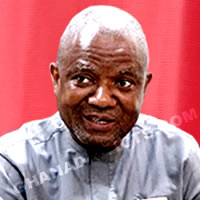

Summary of Key Development Problems/Issues
Community durbars were organized in the three zonal areas of the Municipality to ellicit the current community needs and aspirations.
The elicited community needs was derived after the harmonization of their current needs and aspirations and the key issues identified under the situational analysis. Appendix xx shows how the harmonisation was done.
The harmonized community needs and aspirations with the Key issues of the GPRSII are listed below:
1. Construction and renovation of schools
2. Extension of electricity.
3. Construction of Senior High Schools.
4. Construction and upgrading of markets.
5. Construction of Roads.
6. Upgrading of Feeder Roads.
7. Extension of School Feeding Programme to all Schools.
8. Construction of drainage facilities.
9. Provision of grants for brilliant but needy students.
10. Provision of Police Stations.
11. Construction of culverts.
12. Treatment of waste water from Oblogo refuse dam.
13. Maintain Aplaku junction through Kokrobite to Tuba junction road.
14. Establishment of Vocational and Technical centres.
15. Completion of Donor projects.
16. Provision of layouts and structural plans.
17. Construction of Health facilities.
18. Construction and upgrading of lorry parks.
19. Construction of office blocks for Zonal Councils.
20. Construction of a District Magistrate Court.
21. De-silting of major drains.
22. New final Waste disposal sites.
23. Complete pipelines renovation at Weija.
24. Construction of Boreholes.
25. Eliminate community factions
26. Effective involvement of CBOs and Associations as Assembly Members are.
27. Development of Tourist sites.
28. Institute community mobilisation fund for Assembly Members.
29. Government intervention to chieftaincy disputes.
30. Prevention of Slums and Squatter settlements.
Vulnerability Analysis
The Municipality falls in one of the underdeveloped municipalities in the region. There is still huge infrastructure deficit in terms of education to make education accessible to the urban poor who cannot afford fees for private schools. This makes them vulnerable in terms of human capital development to seize the emerging opportunities that comes with urbanisation and middle income status.
Unauthorised settlements especially around water ways and wetlands are prone to disasters and governments future policy on unauthorised developments. The shocks that would come from government policy and bye laws on such places leaves them vulnerable.
With about 9,470 people identified with various forms of disability within the Municipality, there is an urgent need to find social protection strategies in addition to the Assembly Disability fund to make cushion them against economic shocks and persecution.
Incidence of urban poverty is increasing marginally with the increase in population without corresponding rate of development, social amenities and quality services. There are pockets of poverty in the peri-urban and rural areas of the Municipality. The incidence of poverty along the coastal areas is still high with fishing as the main occupation.
The lost of agric lands to estate developers and sand winning leaves peasant farmers and women vulnerable to poverty. Poverty levels are likely to increase if alternative livelihoods are not sought for these displaced farmers. Children in conflict with the law, child abuse, child labour and streetism are prevalent in the Municipality and often recorded by the Social Welfare and Community Development Department. There are PLHIV’s in the Municipality and needs to be counselled against transmitting the diseases to others. Stigmatisation of PLHIV’s leaves them vulnerable to employment and livelihood.
The predominance of men in the vibrant sectors of the economy and access to land and capital leaves women vulnerable. With a population dependency ratio of 62.9, there is a high level of vulnerability amongst dependants if there are no reliable and decent source of living for the economically active population. The low representation of women in governance like Assembly leaves no role models for girls to emulate.
Date Created : 11/20/2017 6:07:02 AM













 facebook
facebook
 twitter
twitter
 Youtube
Youtube
 +233 593 831 280
+233 593 831 280 0800 430 430
0800 430 430 GPS: GE-231-4383
GPS: GE-231-4383 info@ghanadistricts.com
info@ghanadistricts.com Box GP1044, Accra, Ghana
Box GP1044, Accra, Ghana